Recipe, page 250.
It’s all about the trees.
Years ago there were Post Grape-Nuts TV ads featuring an old guy walking through the forest. “Every eat a pine tree? Some parts are edible,” he’d say. At the time most people thought he was just a crazy old fart. But he wasn’t.
Turned out to be Euell Gibbons, a pretty well-respected naturalist in his day. Here’s one of the spots from 1974…
Today, we’re all much more aware of the virtual cornucopia of natural ingredients available everywhere. And particularly savvy chefs — always looking to experiment, to give us an experience which reminds us of something familiar.
That’s exactly so with this dish, Matsutake, Pine Nut, Mastic and Rosemary, from the Alinea Restaurant cookbook. In it, we’re getting elements that evoke the very trees Gibbons was praising. After I made this and tried it, I thought that just maybe, Euell was on to something.
I picked a couple of fresh rosemary springs from the garden and placed them into a pot of water, letting it come to a boil.
The book says to put them in a heatproof bowl and cover with boiling water. Then let them steep, covered, for an hour. I don’t know what the difference could be. Maybe boiling the branches makes it a bit more bitter, but I figured it would impart more rosemary flavor into the liquid.
Strain through a chinois and re-weigh. If it’s less than 600g, add more water to make up the difference.
Now wait a minute. What if I just used more water to begin with, then measured out 600g of the original boiled liquid? Seems to make more sense, then you’re not diluting your flavors, and not making so many bowl changes. I’m all about less dishes to do.
I transfered the infused liquid to the blender, and let ’er rip. Then sprinkled the gellan slowly into the still-hot liquid. Blended for at least two minutes, then transfered back to saucepan.
Added the sugar and brought to a boil until it fully dissolved.
I sprayed a Pyrex tray with non-stick oil and poured in the thickening liquid gel. Glass “brownie” trays are great for making gels, as they provide some depth for the cubes.
I let the rosemary gel cool on the countertop, then cut into half-inch squares, and stored in a plastic container.
Yields: about 96 gel cubes
Ingredients:
2 Sprigs fresh rosemary, from my garden
Water
Kelcogel F, low-acyl gellan gum, from Le Sanctuaire
C&H cane sugar
Sherry Vinegar Gel
Since this is basically the same recipe and setup as for the rosemary gel, so now I was a pro at it!
I used “Blis 9” sherry vinegar from Blis Gourmet, their nine-year-old vinegar aged in maple-cured, single-barrel bourbon casks (they also make maple syrup). In a medium saucepan, brought the sherry vinegar and water to a boil.
I transfered the boiled vinegar to the blender. Then sprinkled the gellan slowly into the still-hot liquid. Always cover the top of your blender when you’re dealing with hot liquids. It will save you from burns sooner or later.
Blended for about two minutes, then transfered back to saucepan.
A quick note about gellan
Use a 1% ratio to the liquids you want to “jellify.” You’ll notice for both these gels, we used a ratio of 6g gellan to 600g liquid. When you take it off the heat, it starts setting up immediately. And, gellan won’t melt when reheated. Cool.
Added the sugar and brought to a boil until it fully dissolved.
I sprayed a Pyrex tray with non-stick oil and poured in the vinegar gel, then let cool on the countertop next to it’s buddy.
Isn’t it pretty?
Yields: about 96 gel cubes
Ingredients:
Blis 9 aged sherry vinegar, from Blis Gourmet
Water
Kelcogel F, low-acyl gellan gum, from Le Sanctuaire
C&H cane sugar
I over-browned the first batch I made. I can’t help it, it’s Stephen Colbert’s fault.
So I tried again. Roasted 200g of pine nuts on a sheet tray until golden brown. Take them out a little early. They’ll keep browning if you leave them on the hot tray.
I added the roasted pine nuts, pine nut oil and kosher salt into a food processor, and chopped for just a bit. I didn’t want a fine powder, just chunks of pine-nutty goodness. After this first batch, I realized that I could get away with a little more oil to loosen up the nuts, and that it was waaay too salty for my taste.
The recipe says to use 2g pine nut oil and 3g kosher salt. I reversed this for my second batch (which I watched very carefully), adding the larger amount of huile de pignon de pin, and it tasted right.
If you don’t have — or don’t want to go to the expense of getting — French virgin pine nut oil, you could easily use a mild vegetable or canola oil. Just enough to bind the chunks together, not to make a paste.
Ingredients:
Pine nuts, from Whole Foods
Huilerie Georges Vivier pine nut oil, from Grand Foods
Diamond Crystal kosher salt
About Mastic
Greek mastic, or masticha, is the dried sap from the Mastic (Pistacia lentiscus) tree, a relative of the pistachio. It’s powdered resin is used in this dish to impart an earthy, pine-like taste. Read more here.
In a mixing bowl, I whisked the egg yolks and half the sugar together. I use a large stainless mixing bowl placed on top of a damp kitchen towel. This prevents the bowl from spinning around when you’re whisking with one hand and pouring with the other.
Over medium heat, I brought the cream, water, mastic and half the sugar to a boil.
After it boiled, I slowly added it to the egg mixture. Whisking, whisking, whisking! This is kinda’ like making a hollandaise or sabayon sauce — it’s critical to add the hot mixture very slowly into the eggs, or you’ll cook them. Scrambled eggs, mmm. Then you have to start all over. (Dirty little secret: years ago I did the scramble with a 48-egg batch of hollandaise, much to the ire of the restaurant’s head Chef. One time. You learn your lesson quickly.)
This is the first time I’ve cooked with mastic, so I didn’t know what to expect! The cream turned out a bit too bitter because of the strength of the powdered mastic. If I were you, I’d probably test yours first before you put the whole amount into the mix.
So I ended up adding more cream to soften up the taste. It was too thin.
I re-thickened the mixture over medium heat by whisking in five pinches of konjac glucomannan..

Then strained the cream sauce into a container. The book says to strain into a bowl set into an ice water bath. (To cool it down quickly? I dunno. I skipped that step.)
Yields: about 2 cups
Ingredients:
Egg yolks (free-range chicken eggs), from Whole Foods
C&H cane sugar
Alta-Dena heavy cream
Water
Chios mastic powder, from Anemos
Additional ingredients for emergency recovery:
Alta-Dena heavy cream
Konjac glucomannan, from Konjac Foods
Matsutake Madness
I received three pounds of fresh Matsutake mushrooms Thursday, directly from their comfy resting places under the great pines of the Oregonian forests. I had called Kris at Oregon Mushrooms on Tuesday. Since they are in season now, she had some fresh #1 grade inventory for immediate delivery.
What $102.00 of ’shrooms looks like:

About Matsutake Mushrooms
Matsutake (Tricholoma matsutake), or “Pine” mushrooms grow under trees in coniferous forests and are usually concealed under the litter and/or duff layers. They are not cultivated, but rather, harvested from the forests. Thus, their high prices and limited availability in autumn. They can be quite earthy, woody or pine-like in flavor. Read more info here or here.
When I opened up the package and three damp paper bags therein, a familiar aroma filled my dry Southern California kitchen. Brought me back to childhood days in the North Umpqua River Valley in Oregon. Thunderstorms. Fir, pine, cedar trees. The log cabin we spent the summer of ’68 in (really). Picking wild blackberries. That damp musty smell of the forest.
“Eww,” commented my daughter.
Never mind, then.
Matsutake Mushroom Purée
I cleaned the pine needles, dirt and duff from the mushrooms, then roughly chopped them up. Placed into a large vacuum bag and sealed it up with my FoodSaver, on the normal, dry setting.
I don’t have an immersion circulator, but I do have a big-ass pot and a candy thermometer. So I cooked them en sous vide for an hour (at about an average of 200ºF) in that, turning the bag occasionally to evenly distribute the mushroom juices.
Then puréed ’em in the blender. The purée was pretty thick, even with their own juices added, so I added a splash of water to get it going again.
The Alinea book says to pass through a tamis, which I have, but it didn’t work.
I don’t have an industrial-strength Vita-Prep blender, I have an Osterizer bar blender. The purée was too coarse to go through the tamis, so I opted for a small kitchen strainer. I guess it’ll just have that “rustic” look.
Then I saved it in a plastic container for later use in the Matsutake caramel and Matsutake cake.
Ingredients:
Matsutake mushrooms, from Oregon Mushrooms
Water, as needed
Matsutake Caramel
Caramel with mushroom purée? Sounds gross I know, but it’s actually quite nice. My 12 year-old was not convinced until she tried it — and liked it! I
I put half the Matsutake mushroom purée and the cream into a medium saucepan and brought to a boil.
Removed from heat and blended, adding the gellan.
This immediately thickened, and quickly formed a “crust” that I should have noticed.
In another saucepan, combine the sugar and glucose. Heat until it comes to a boil. But it didn’t start melting…
So I added a bit more glucose than the recipe called for. Once I did, the sugar started clearing and boiling.
With the blender on medium speed add the carmelized sugar slowly.
My blender has one speed. Fast. I should have checked the gelled mushroom cream too. Once I started adding the hot sugar, the stuff exploded all over.
All over the blender. The counter. My hands. Ouch.
I instinctively capped the blender with the saucepan to stop the eruption. Then tended to myself. One burned finger. Not too bad. What did I say earlier, during the sherry vinegar gel?
“Always cover the top of your blender when you’re dealing with hot liquids. It will save you from burns sooner or later.” Yeah.
Once I was all settled and had the mixture blending on high, I added the cubed butter to emulsify.
I let cool and transfered to a squeeze bottle.
Ingredients:
Matsutake mushroom purée
Alta-Dena heavy cream
Kelcogel F, low-acyl gellan gum, from Le Sanctuaire
C&H cane sugar
Glucose (Karo corn syrup)
Unsalted butter, cubed
Matsutake Cake
The other puréed half will be cooked in glass egg coddlers tonight, then topped with the other components I’ve already finished: sherry vinegar gel cubes, rosemary gel cubes, mastic cream and pine nuts.
Using the KitchenAid mixer, I beat together the sugar, eggs and glucose until it was almost fluffy, but more ribbon-like. Think whipped cream or meringue.
Whisked together mushroom purée and water.
Folded mushroom purée into the eggs with a spatula, taking care to keep it light and bubbly.
Then I sifted the baking soda and flour together, and added to the mix, folding in in gently as well.
Now the cake batter looked and smelled more like pancake batter than anything else. I might just try and make pancakes out of the leftover batter. (Of which, it looks like there will be quite a lot!)
Add batter to each egg coddler. Keep in mind that the batter will rise slightly, so don’t fill them up to the tops. You should leave some room for your garnishes to come.
Now, we’re going to steam them. I used a turkey pan for the baine marie. Brought water to a boil, then put in the uncovered egg coddlers. Covered the steamer, and steamed for about ten minutes. You’ll know when they’re done if they spring back to the touch, kinda sponge-like.
Remove and cool a bit, then start plating!
Ingredients:
Eggs (free-range chicken eggs), from Whole Foods
C&H cane sugar
Glucose (Karo corn syrup)
Matsutake mushroom purée
Water
Cake flour
Baking powder
Brown butter, Challenge butter, from Whole Foods
Assembly
I took the Matsutake cakes out of the bain marie, opened up the egg coddlers, and began to plate.
I squeezed a large pile of Matsutake caramel onto each. Placed one cube each of the rosemary gel and sherry vinegar gel on top of each of the cakes. Garnished with a generous sprinkling of the pine nuts.
I replaced the lids and placed each vessel back into the steamer. Covered, and steamed for another 5 minutes.
Serve. Open each coddler tableside and pour in some chilled mastic cream. Enjoy!
Equipment:
Knife and cutting board
Osterizer blender
Kitchenaid mixer
Squeeze bottles
Salter digital scale
Measuring bowls
Stainless mixing bowl
Medium saucepans
Wire whisk
Glass bowl
Spatulas
Plastic containers
Serveware:
8 glass egg coddlers, by trendglas
Yields: 14-18 Servings, depending on how large your portions are. Also, LOTS of rosemary and vinegar gel cubes left over…
Goes well with:
Greek Boutari retsina
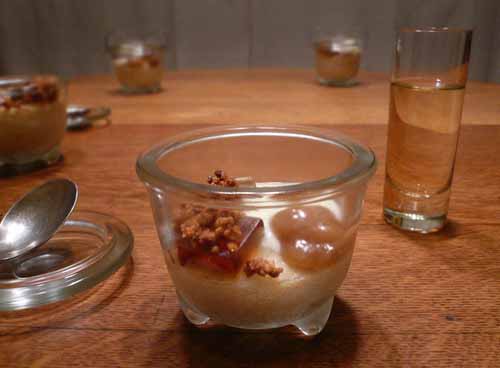

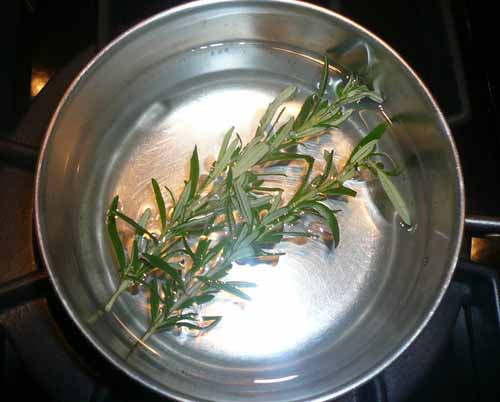
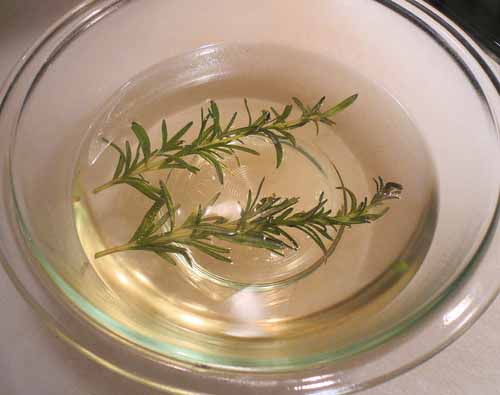

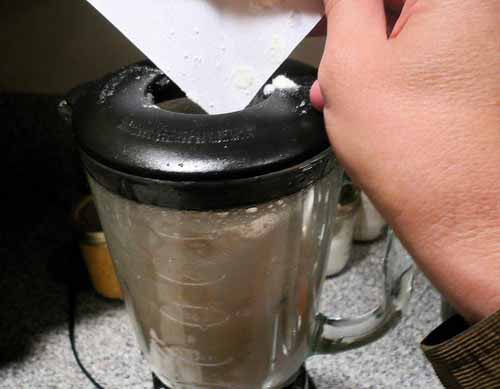
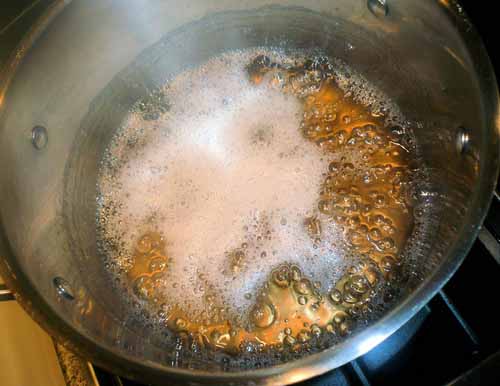

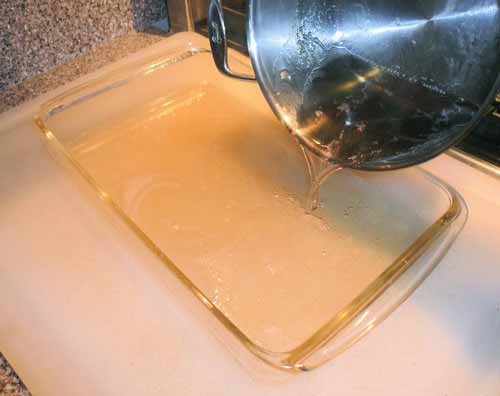

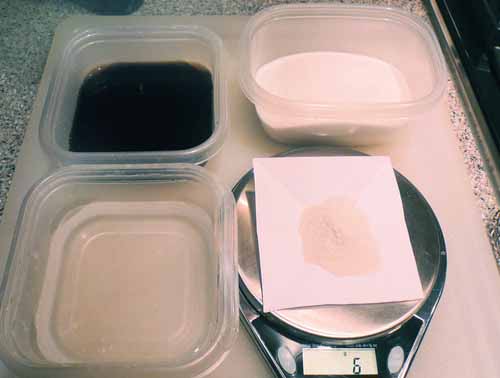




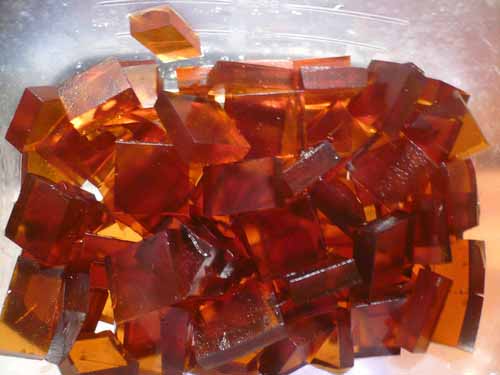
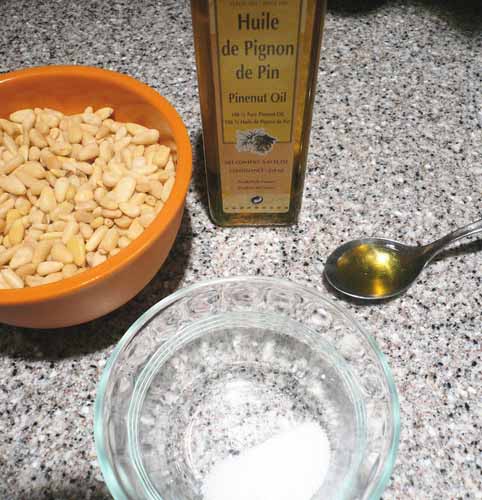

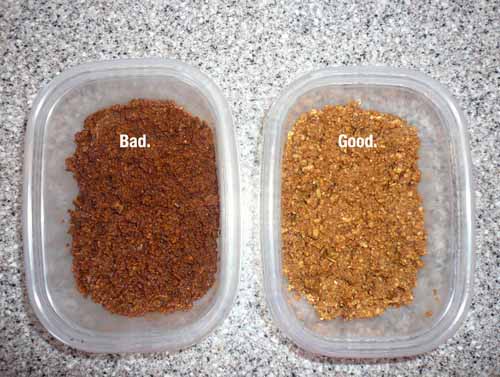


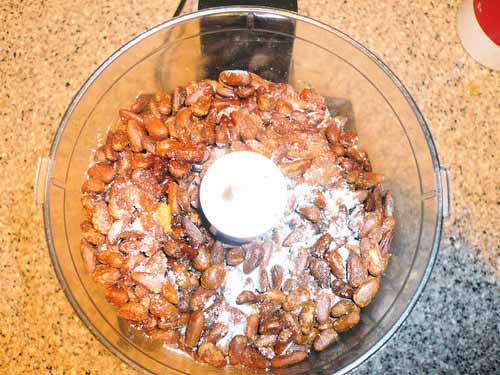
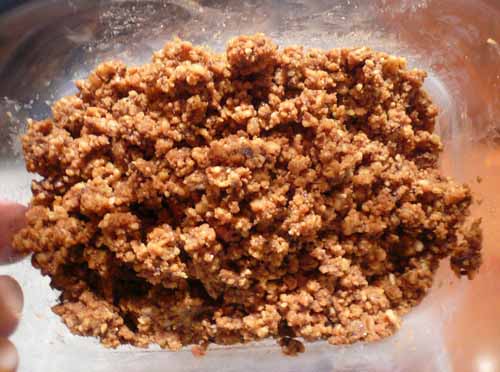
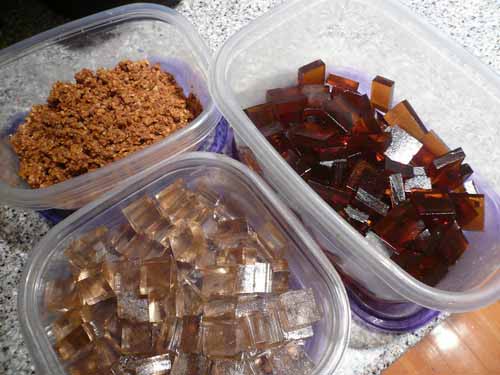


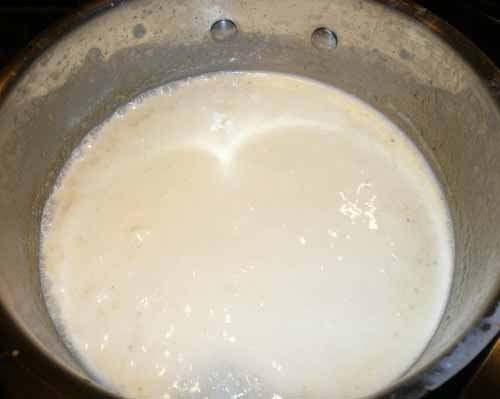
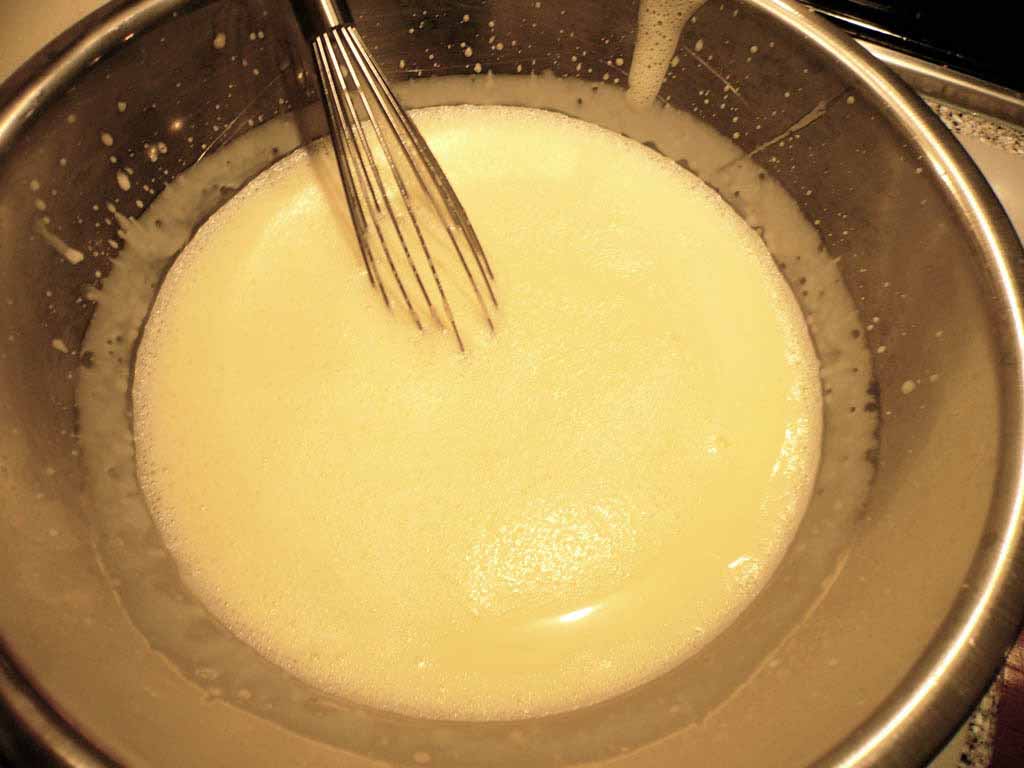
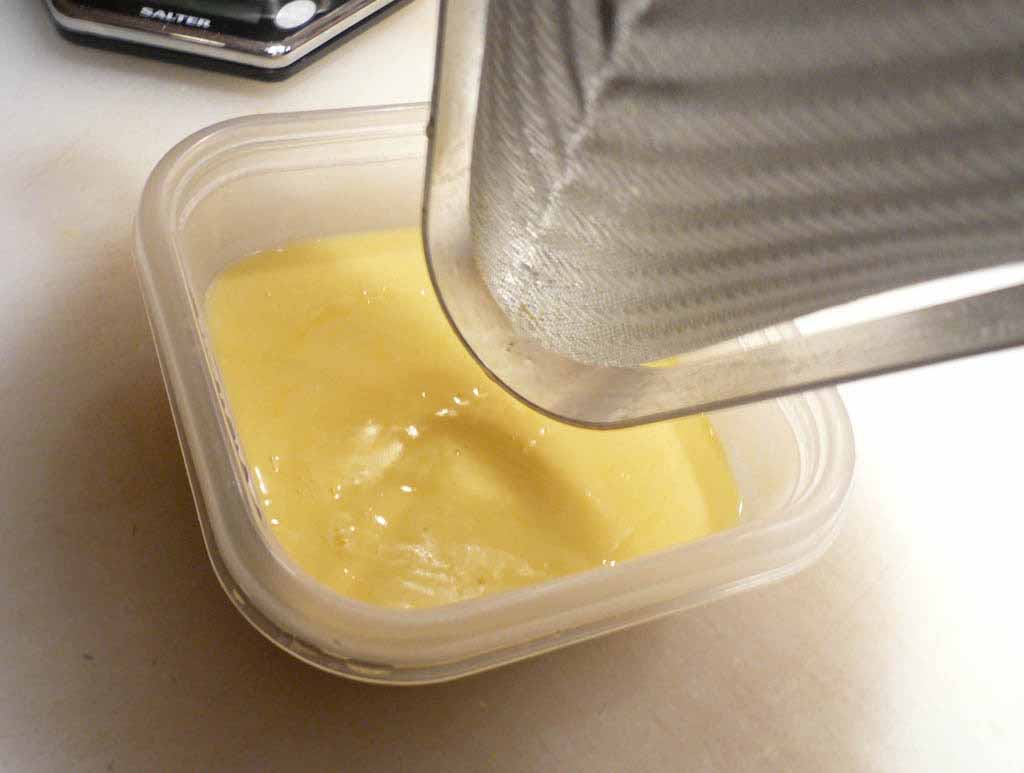
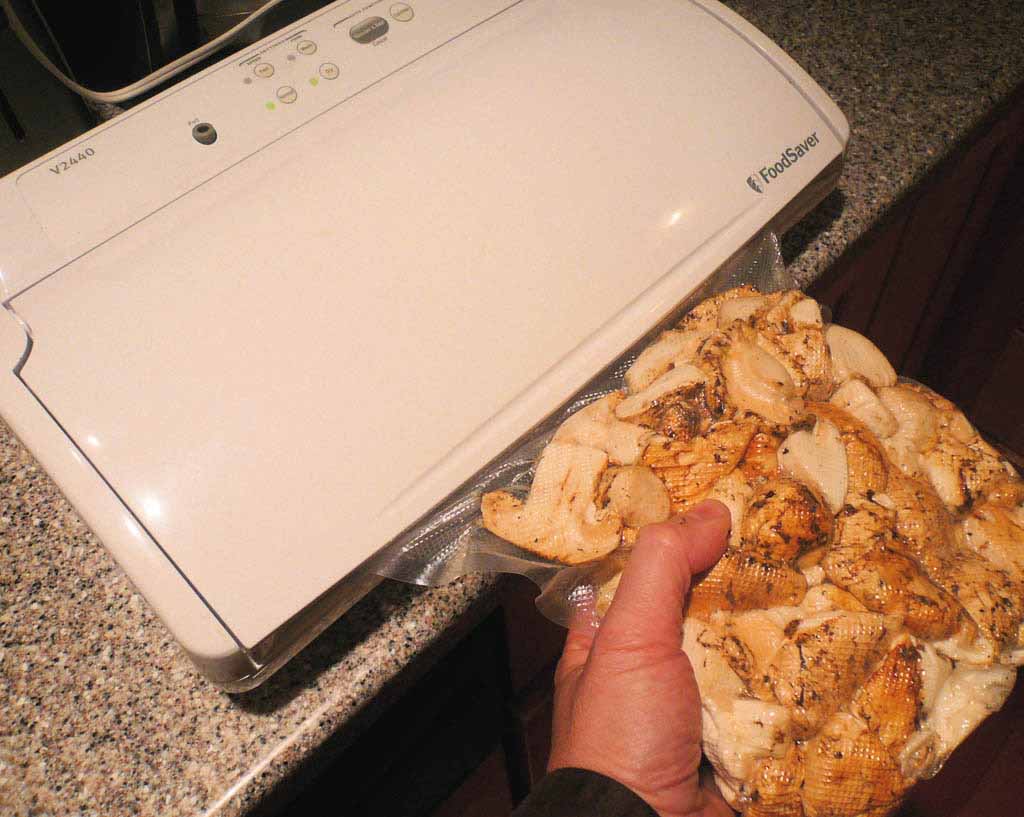
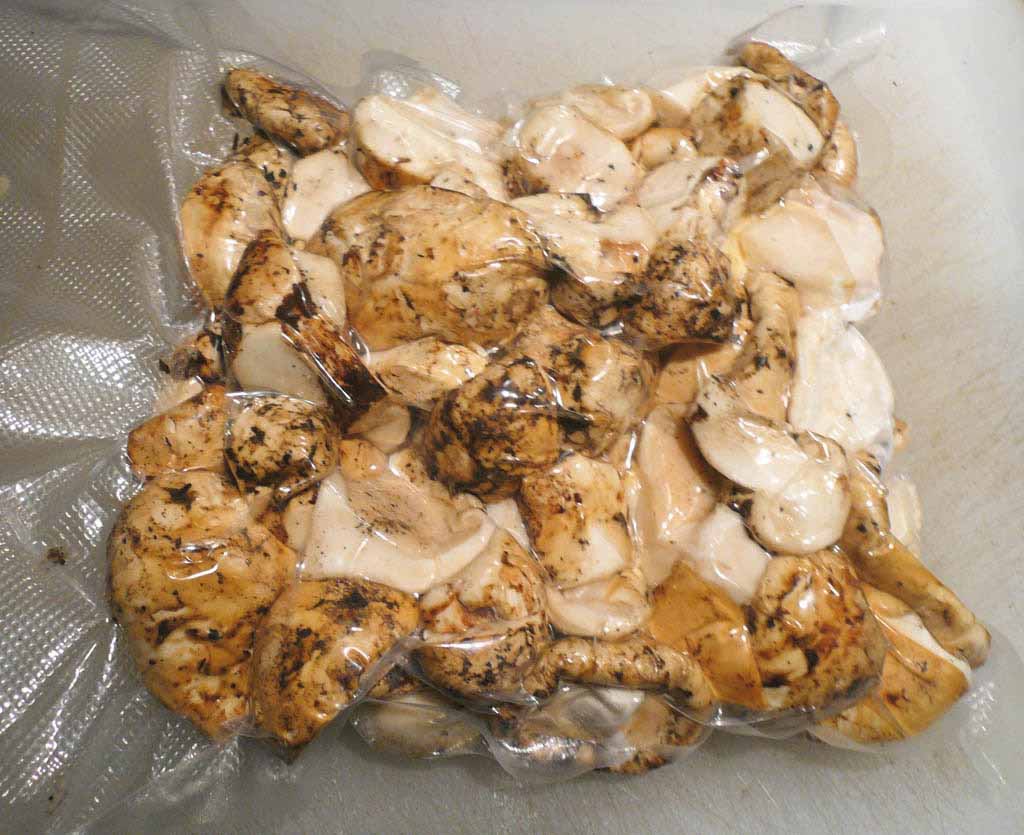



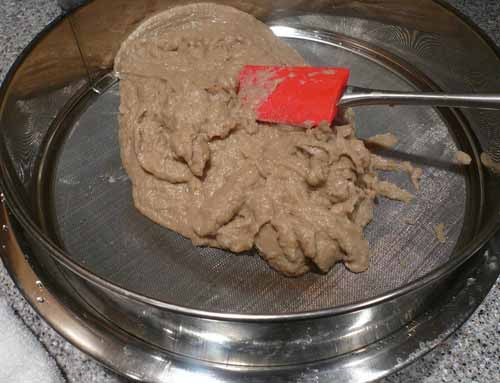
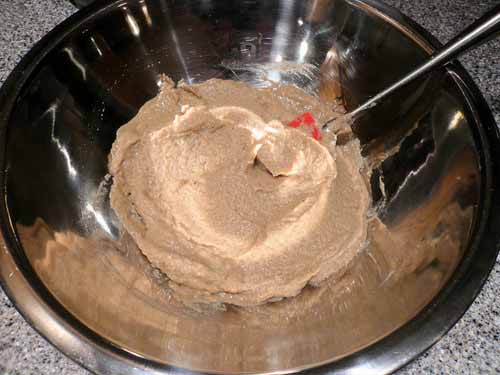


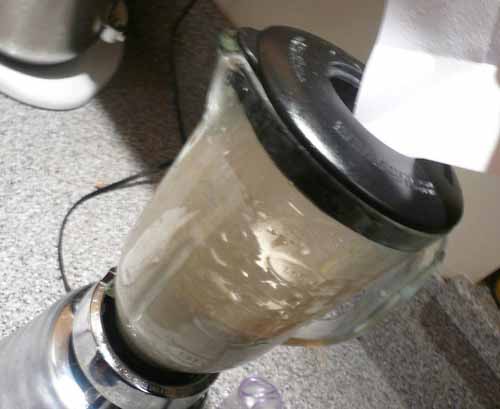

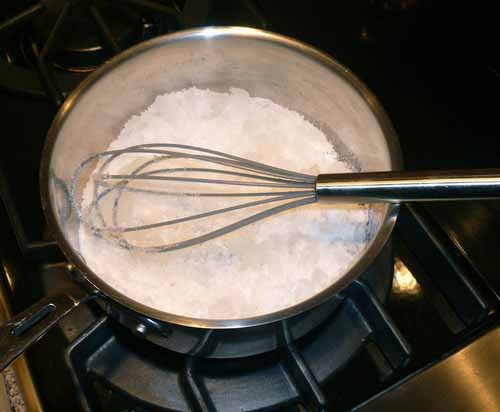
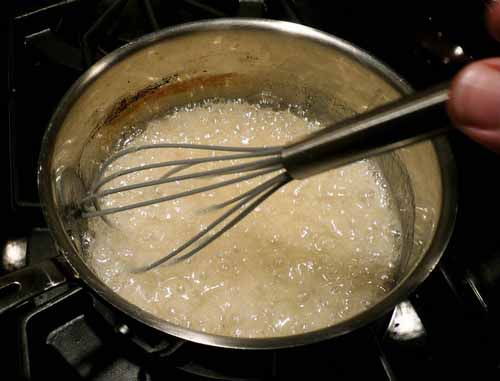



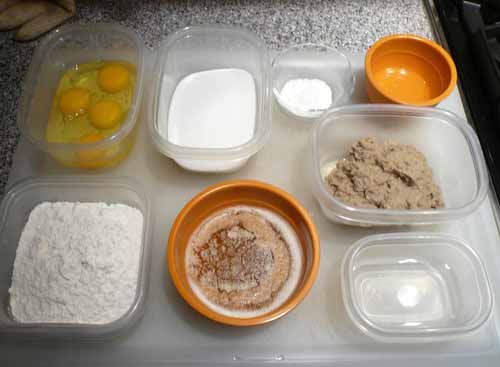





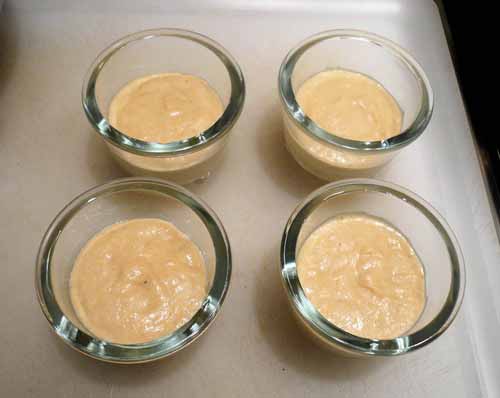
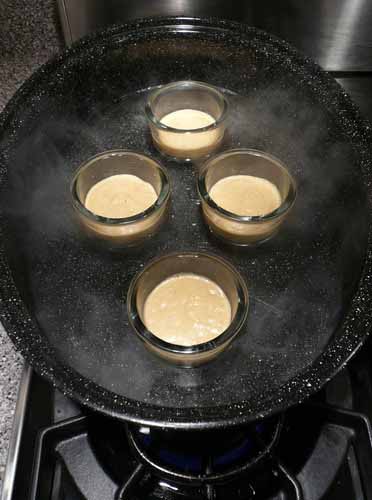

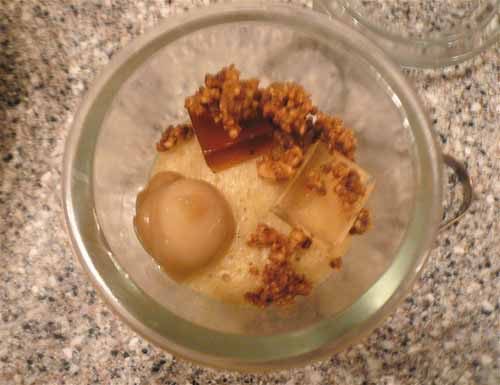
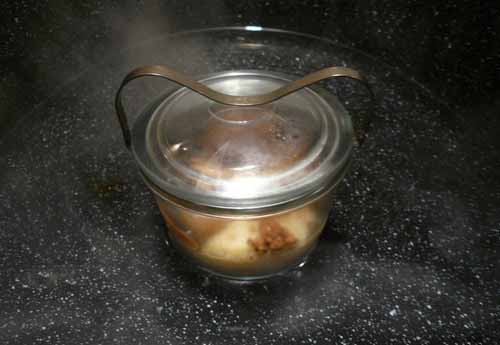
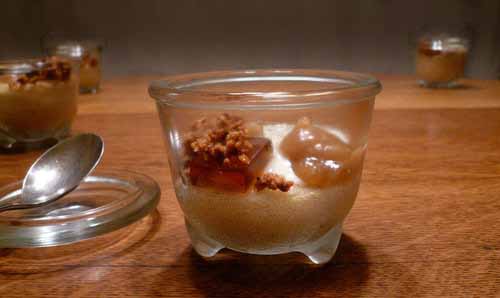
4 Responses to MATSUTAKE, Pine Nut, Mastic, Rosemary